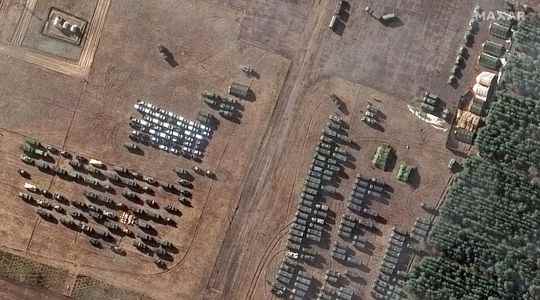Vladimir Poutine counts on them to take the control of a maximum of territories in Ukraine and to destroy the military forces there. Their names: the BTG, for “battalion tactical groups” (batal’onnaya takticheskaya gruppa, in Russian), the lethal weapon of the invasion launched by the Russian President in the early hours of February 24. At least a hundred of them have been deployed over the past few months on the outskirts of Ukraine. That is more than 100,000 fighters and thousands of armored vehicles and tanks.
These BTG form the elite troops of the Russian army. And are all the more formidable as they aggregate, within the same unit, the best elements of different regiments. Composed of professional soldiers (armoured, infantry, artillery, engineers), each BTG has a few hundred soldiers and officers. “Their small size has the merit of making them agile and quickly deployable,” noted the Chatham House Institute in a 2019 report.
In the Ukrainian theater, the BTG could take advantage of the air superiority of the Russian army – Kiev does not have high-performance anti-aircraft systems and much fewer fighter jets than Moscow. “The Ukrainians are going to have trouble moving their units and reacting to Russian movements, argues Gustav Gressel, Russia specialist at the European Council on International Relations. The Russians will be able to choose which opposing forces to bypass and which to attack, which will provide a considerable advantage.” Enough to target the Ukrainian capital, where the country’s institutions are located.
A devastating combination of artillery and drones
These BTG offensives could be all the more devastating if they can be combined with other weapons. “Russian artillery, traditionally important, is the same as in Soviet times, explains Joseph Henrotin, researcher at the Institute of Comparative Strategy and editor-in-chief of the journal CIO (International Defense and Security). But the novelty is that it relies on small reconnaissance drones, the images of which go back to the command cell of each tactical group to order the batteries into action with precision.
Enough to cause considerable damage on the front line of the Ukrainian land forces. This tactic “reflects the diminishing role of infantry and tanks”, also noted the Chatham House report, which noted that these “are employed to complete the enemy’s destruction and to exploit in its depth [l’offensive] for a decisive effect”. Ukrainian brigades had thus suffered terrible losses in 2014 and 2015 in the Donbass, when Russian artillery and armor supported the offensives of the separatist forces.
Especially since the BTG, in addition to their tanks, can rely on equipment designed to annihilate the points of resistance remaining after the bombings. Among them, the TOS-1 vehicles, used by Azerbaijan during its assault on Armenian Karabakh in 2020. “These implosion weapons release an explosive gas that consumes a lot of oxygen, specifies Joseph Henrotin. The depression caused makes it possible to blow up mines hidden in the ground and can cause damage to nearby soldiers, even if they are in cover.”
Finally, these BTG, made up of different groups, are very flexible, “which facilitates the rotation of the workforce”, remarks Joseph Henrotin. Enough to continue the operations by bringing in fresh troops without disorganizing the front too much if the Ukrainian resistance proves to be longer than expected. Or if Vladimir Putin, after having asked the BTG to lead the invasion, decides to convert them back into the occupying forces.
